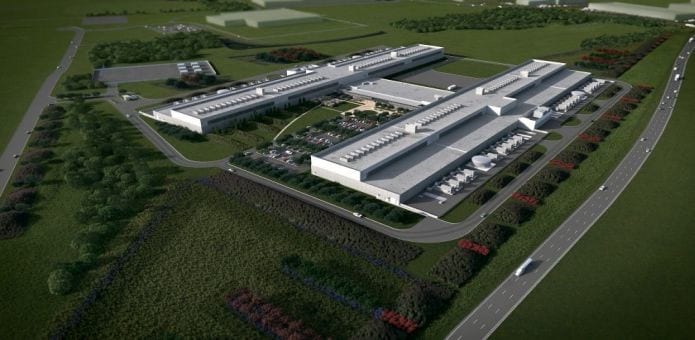Table Of Contents
Facebook’s upcoming $1 Billion Texas data center will be powered almost entirely by wind
Facebook will be powering the fifth data center with 100 percent renewable energy, stemming from 200 megawatts of wind energy that it will be getting from a new upcoming clean energy project in the year 2016.
Facebook announced on Tuesday that it’s building a huge $1 billion data center in Ft. Worth, Texas. The facility, which is already under construction, will be Facebook’s fifth data center, and will be built on land purchased from a real estate company run by the eldest son of former Presidential candidate Ross Perot.
Along with Altoona, Prineville, Forest City and Lulea data centers, Fort Worth will be one of the cornerstones of the global infrastructure that brings Facebook apps and services to you every day and is serving billions of more people online through Internet.org.
It is very strange as the weather of Texas is hot and intense cooling is required by the data center, but Facebook says they don’t have any problem. Facebook already has a data center in North Carolina with hot humid southern heat that it’s figured out how to keep chilly, and it will be employing the same techniques in its Texas location.
Many will likely be watching to see if Facebook can keep it cool and the expenses down. Facebook’s data centers are considered forerunners in data center technology because of its Open Compute Project.
Like its predecessors, we anticipate Fort Worth to be one of the most advanced, capable, and sustainable data centers in the world. Our continuing work on data center design is an important part of our overall infrastructure efficiency hard work, which has helped us save more than $2 billion in infrastructure costs over the last three years.
In the company’s announcement, Facebook said it will be powering the new data center with 100 percent renewable energy, stemming from 200 megawatts of wind energy that it will be getting from a new clean energy project coming online in the year 2016.
Ken Patchett, the director of data center operations for the west region said “200 MW is more energy than we will need for the anticipated prospect, and we’re proud to have played a role in bringing this project to Texas”.
Facebook worked with Citigroup Energy, Alterra Power Corporation, and Starwood Energy Group on the wind project, which is supposed to be delivering electricity by next year. This isn’t Facebook’s first time using wind energy; the company is also powering its data center in Iowa with energy from a close by wind farm.
Wind energy is the cheapest and most extensively deployed form of clean energy around the world. A report issued earlier this month from the European Commission Joint Research Centre found that there were about 370 gigawatts of wind turbines installed by the end of 2014. One gigawatt is equal to a large coal or natural gas plant.
Texas and Iowa have large and growing wind industries, in part due to the states’ naturally windy locales, the regions’ growing demand for power and present power lines that can deliver wind energy to areas that use it. Out of the 131 megawatts of wind power added in the U.S. in the first quarter of this year, 110 megawatts were installed in Texas and 20 megawatts were installed in Iowa.
Facebook is not just worried with clean energy for its data centers. The social media giant has also built its data centers to be energy efficient, using outdoor air for cooling (instead of power hungry air conditioners), in addition to energy-efficient servers and facility designs. Facebook made those designs open source to the data center community over four years ago.
Facebook’s move is the hottest example of an Internet company adopting fresh power to run web services.
Apple has been investing in solar energy for its data centers in California, Nevada and North Carolina.
These Internet companies not only have consumer-facing brands, but they’re also looking to hire and preserve young employees interested in environmental issues. Finding new energy sources is also about beating into low cost power — wind and solar in certain places are competitive with fossil fuels — and giving companies new and more flexible energy options.
Facebook will most probably buy the wind power at a fixed low rate over several decades. If grid energy prices rise, the deal could actually save Facebook’s money on its energy bill.
When Facebook first built its Prineville, Oregon data center, it debuted a new energy savings plan, which it has since carried over to its other operations. The company then published its hardware plans so other company’s data centers can follow suit.
The new Fort Worth data center will be built as three, 250,000 square foot buildings and employ at least 40 residents of Fort Worth, according to the Fort Worth Star-Telegram. The paper also said that city council approved a $146.7 million incentive package for the plan in the month of May.
Facebook’s other data center locations are in Oregon, Iowa, North Carolina, and Sweden.

